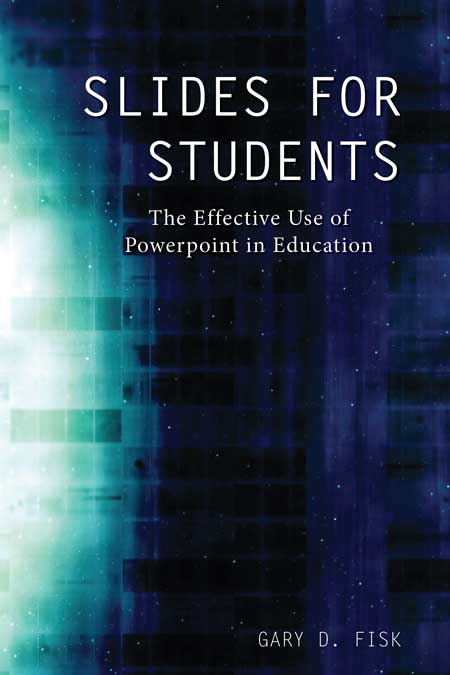Slides for Students: The Effective Use of Powerpoint in Education

Author
Gary D. Fisk
ISBN
978-1-940771-43-4
Print Version
$43.99
300 million powerpoint presentations are given daily, yet there is a disconnect between the amazing technology of powerpoint and a mediocre student learning experience. To unleash the full potential of powerpoint presentations, we must do a better job of creating presentations that fit the educational needs of students. Slides for Students does just that.
Slides for Students is an open and honest discussion about powerpoint in the classroom. A need exists for thoughtfully designed and implemented classroom instruction that focuses on the learner rather than on the technology. This book was written to translate academic research findings into practical suggestions about powerpoint that educators can use. Divided into two parts, Slides for Students discusses the history of powerpoint, explores academic studies on the topic, and demonstrates how to design slides to best suit educational needs and engage with students to avoid the dreaded “death by powerpoint.”
Gary D. Fisk is a professor of Psychology at Georgia Southwestern State University. He received his Ph.D. in Psychology from the University of Alabama, where he studied behavioral neuroscience. His areas of specialty include the study of how awareness emerges from the earliest stages of visual information processing in the brain and using technology to support and encourage student learning. These technologies include instructional web pages, Flash-based animations, online learning management systems, and PowerPoint software. In his free time, Dr. Fisk enjoys gardening and making homebrewed beer.
From the Introduction of Slides for Students:
A small but important challenge in the writing of this book was how to handle the term “PowerPoint.” At first, it seemed best to avoid using this term because it represents a proprietary product that is trademarked by the Microsoft Corporation. On the other hand, my attempts to write about presentations without using the term “PowerPoint” resulted in awkward writing. The heart of the issue is that the term “PowerPoint” has taken on multiple meanings and, therefore, can be used in more than one manner. Hubert Knoblauch, a sociologist who studies PowerPoint as a cultural phenomenon, suggests an elegant way to delicately treat this ambiguous term (Knoblauch, 2012, p. 3). He uses “PowerPoint” (note the capitalization) to refer specifically to the Microsoft Office software application. This capitalization is appropriate given that Microsoft’s PowerPoint software is a proper noun. In contrast, the term “powerpoint” (all lower case) is used to describe a modern presentation style that is characterized by some form of multimedia supplement to the speaker’s voice. This broad use of the term can refer generically to many modern presentations, regardless of the technology that was used. This book will follow Knoblauch’s suggested usage of these terms to make this important distinction between a specific software product (PowerPoint) and the more general uses of multimedia to support presentations (powerpoint).
Shop indie and support your Slides for Students community with these retailers:
